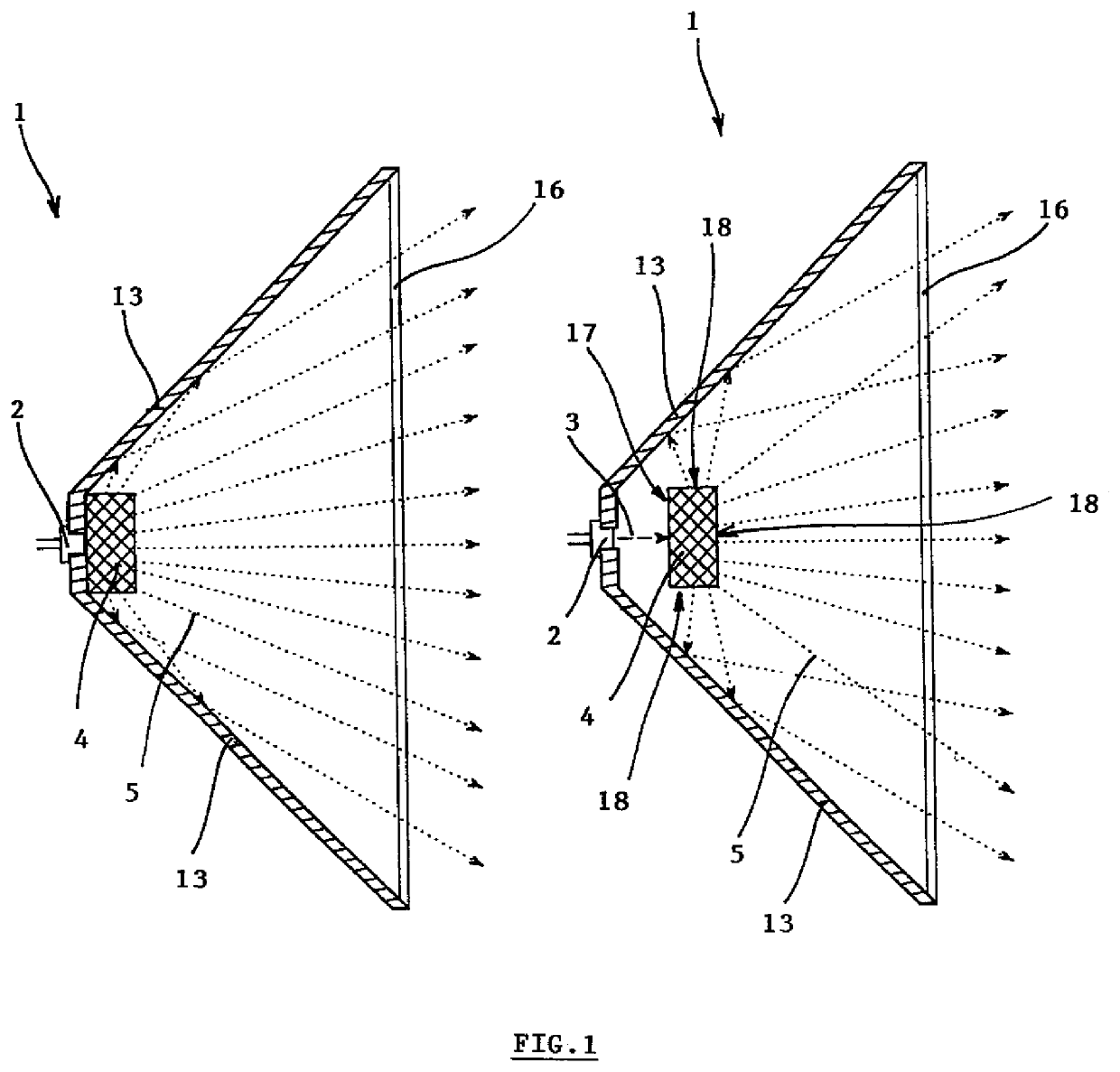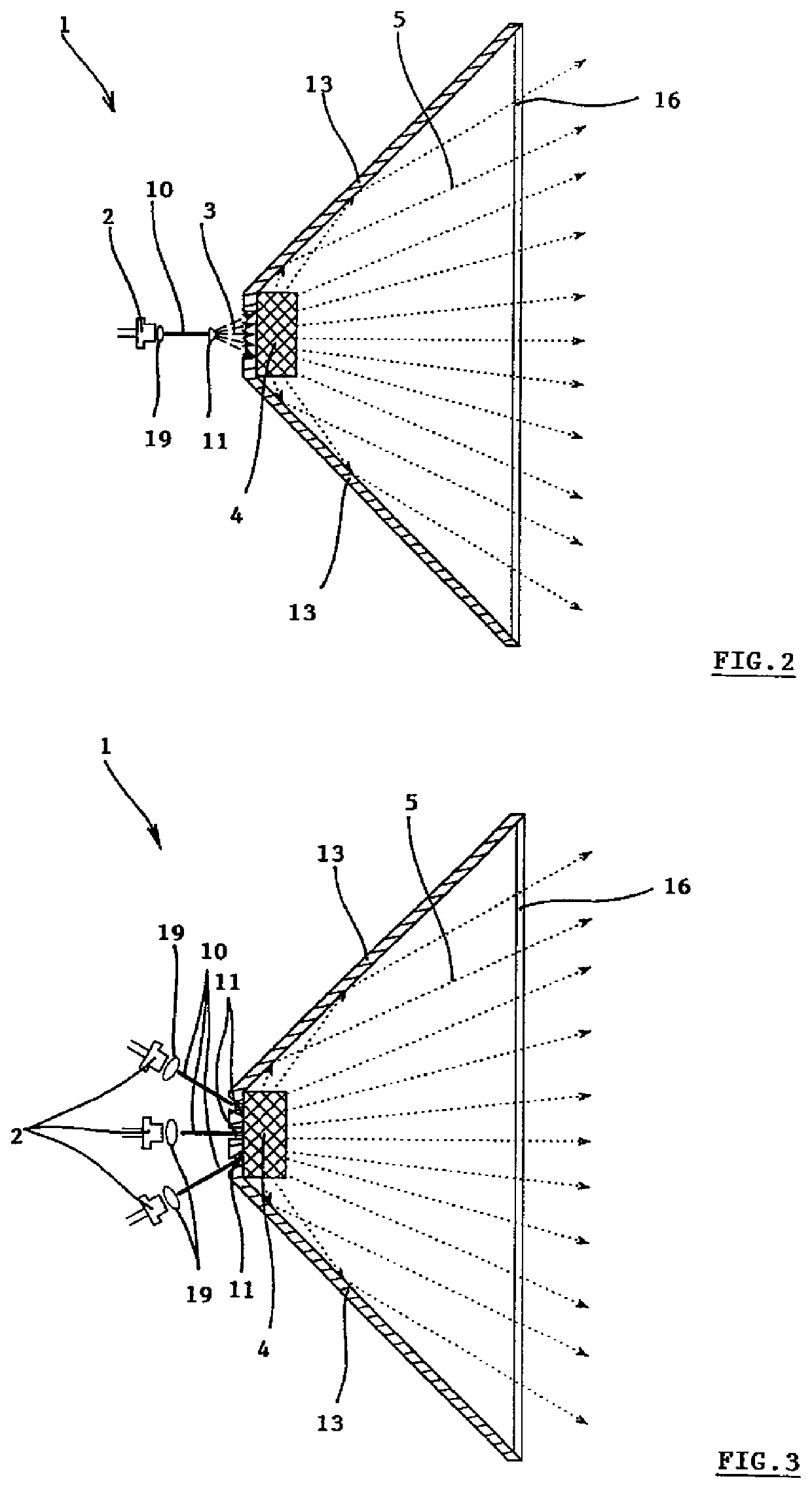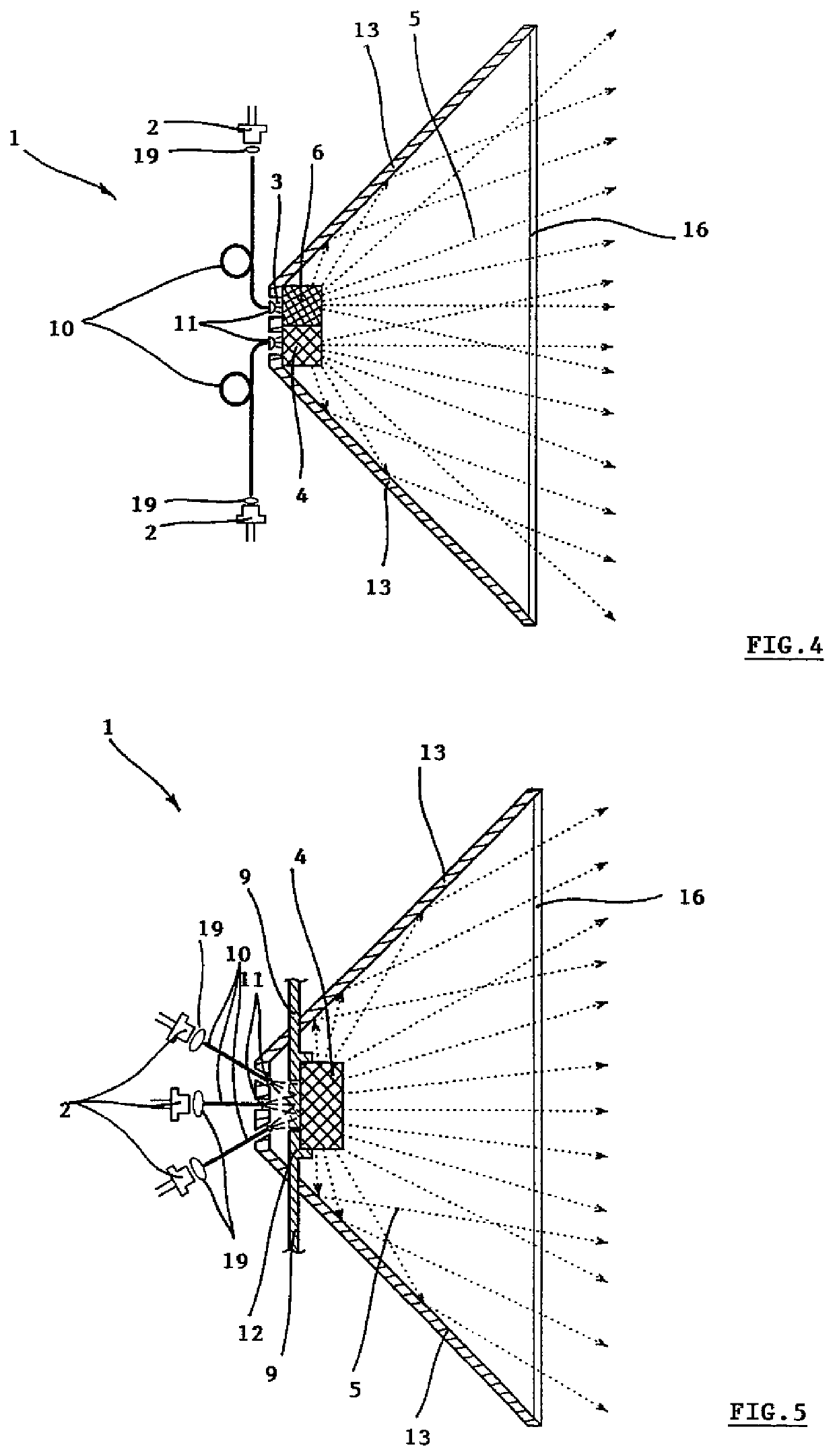Light source having solid-state laser irradiating single-crystal phosphor with specific composition
a single crystal, light source technology, applied in semiconductor lasers, lighting and heating apparatus, instruments, etc., can solve the problems of high maintenance cost, high electrical energy consumption of light source, and high energy consumption of phosphor, so as to reduce the operational temperature of phosphor, improve the durability of light source, and reduce the effect of excessive hea
- Summary
- Abstract
- Description
- Claims
- Application Information
AI Technical Summary
Benefits of technology
Problems solved by technology
Method used
Image
Examples
Embodiment Construction
[0063]It is understood that the below stated and depicted specific embodiments of the invention are represented for illustration and not as the limitation of the embodiments of the invention to the stated embodiments. Experts familiar with the state of the art will find or will be able to ensure, when performing routine experimentation, larger or smaller amount of equivalents to the specific embodiments of the invention which are described here. These equivalents shall be included in the extent of the following claims too.
[0064]The light source 1 is depicted in a simplified manner in FIG. 1 where we can see it in cross-section. The basic parts of the light source 1 are the solid-state laser source 2 of the excitation coherent radiation 3 to which a single crystal phosphor 4 is fixed, or, possibly, the single crystal phosphor 4 is located in a more remote position from the source of the excitation coherent radiation 3. The single crystal phosphor 4 emits extracted light 5 which is di...
PUM
| Property | Measurement | Unit |
|---|---|---|
| wavelengths | aaaaa | aaaaa |
| light wavelengths | aaaaa | aaaaa |
| luminance | aaaaa | aaaaa |
Abstract
Description
Claims
Application Information
 Login to View More
Login to View More - R&D
- Intellectual Property
- Life Sciences
- Materials
- Tech Scout
- Unparalleled Data Quality
- Higher Quality Content
- 60% Fewer Hallucinations
Browse by: Latest US Patents, China's latest patents, Technical Efficacy Thesaurus, Application Domain, Technology Topic, Popular Technical Reports.
© 2025 PatSnap. All rights reserved.Legal|Privacy policy|Modern Slavery Act Transparency Statement|Sitemap|About US| Contact US: help@patsnap.com



